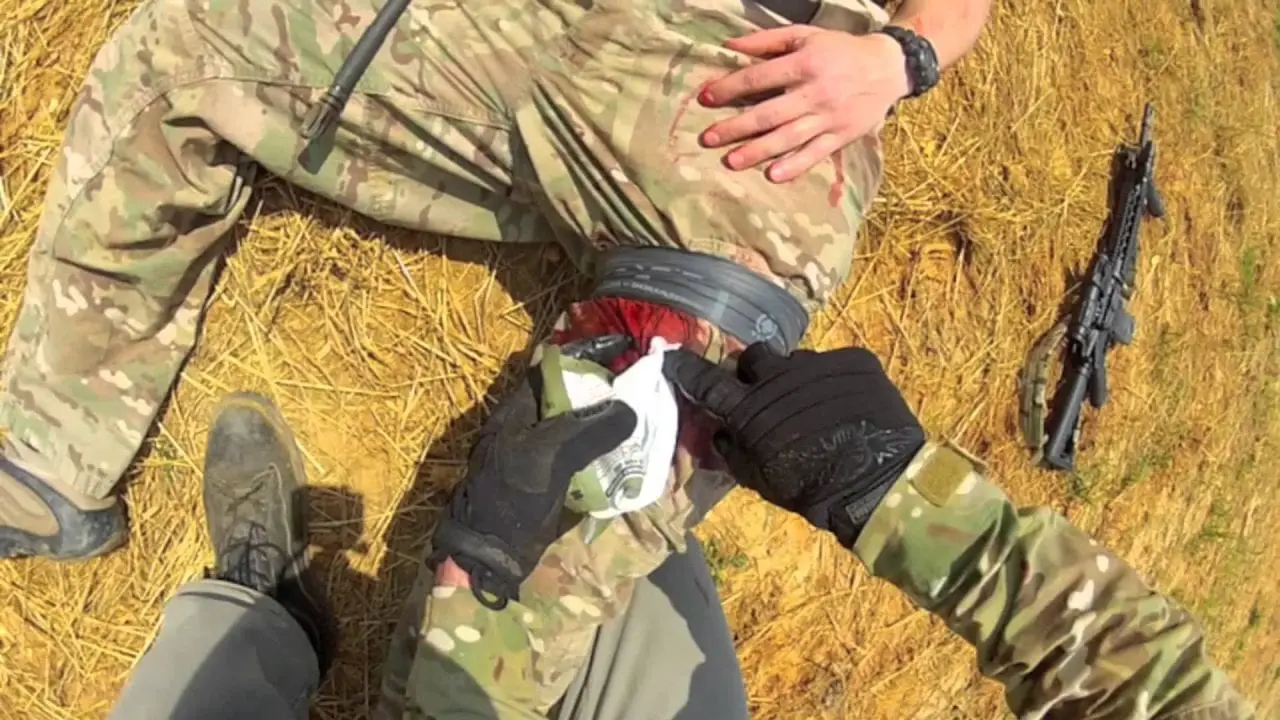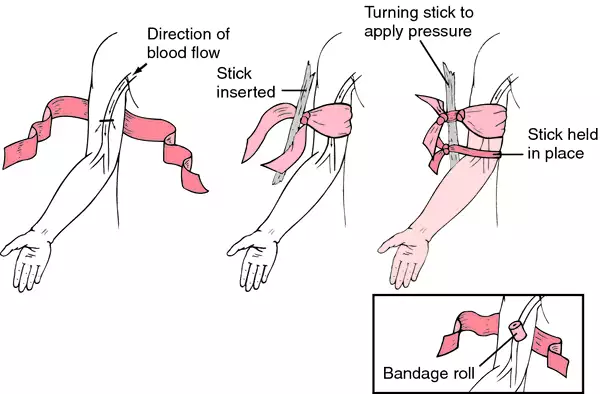How & When To Use A Tourniquet

No one wants to deal with an injury. However, injuries do happen, and it is important for everyone to know what to do if you or a your loved one gets injured, especially something as serious as a deep laceration. A person who is suffering from massive bleeding can quickly go into shock and die. When pressure points and bandages fail to control bleeding, there is another option available to you.
The Tourniquet
Dr. David Johnson is an ER physician. and writes for the Wilderness Medical Association. Last year, he discussed some of the misconceptions about the tourniquet and dispelled myths. He has stated that it is relatively rare for a death to occur as the result of a carefully applied tourniquet. Dr. Johnson has also stated that tourniquets can save lives, so it is important for people to know how and when to apply one. They also need to know where to apply the tourniquet and how long it should be applied.

How You Can Improvise
There are a variety of first aid products that you can buy that will help someone who has severe bleeding. It is a good idea to keep your first aid kit stocked with these supplies. If you do not have one of these products, or they are not working well for you, then there are options. Here is how you can improvise and make your own tourniquet:
- A piece of clothing might be your best option, providing it can be wrapped around an extremity and tightened. A belt or shirt can be used.
- The material you use needs to be long enough so that it can wrap every appendage several times.
- The next step is to fold in a two-inch band. Keep the material flat and smooth in order to prevent it from pinching your skin.
- You will need to tighten the tourniquet with a ridged stick. This will prevent the tourniquet from breaking or loosening.
How To Use The Materials
Both you and the person who is injured are most likely panicking. Stay calm and focused so you can properly apply the tourniquet.
- The best place to apply the tourniquet is three or four fingers above the injury.
- You will need to pad the site. If possible, you should keep clothing over the site. Try to keep the tourniquet as smooth as possible.
- Create a half knot and place a stick over it. Complete the other half.
- Turn the stick and increase the pressure until the bright red bleeding has stopped. The blood may still ooze, but it is controlled. Do not over-tighten it.
- Take the rest of the material and knot the stick down the appendage so that it cannot be unwound, but it can be released if needed.
- Put a T on the person's forehead if possible.

Problems Associated With Tourniquets
Tourniquets can save a life. However, they are not perfect. A tourniquet can cause the following complications:
- Muscle and skin tissue damage
- Appendage loss
- Damage to the nervous tissue
How Will I Know When To Remove The Tourniquet?
One hour after applying the tourniquet, you should ask the following questions.
- Is the person still bleeding?
- Is the person in shock?
- Will we be able to get professional help within an hour?
The tourniquet can be released if the answer to aforementioned questions is no. This will need to be done slowly. Here is what you need to look for:
- Did the person start bleeding again?
- Is the person showing symptoms of shock?
If the answer to those questions is yes, then you can tighten the tourniquet back up.
A tourniquet can control bleeding that can potentially be deadly. The thighs and upper thighs are the ideal places to apply a tourniquet. The tourniquet should be applied two to four inches above the injury site. Hopefully you will never have to use this guide, but if you remember these easy tips, you might just save a persons life.
[cleveryoutube video="Atm-CX-pZzI" vidstyle="1" pic="" afterpic="" width="" quality="inherit" starttime="" endtime="" caption="" showexpander="off" alignment="left" newser="" margin="true"]
Featured image source: youtube.com


